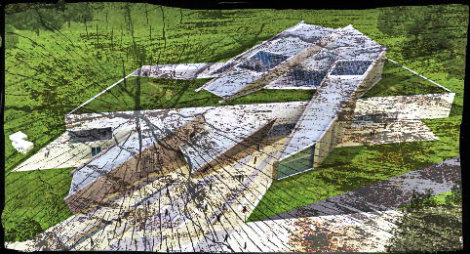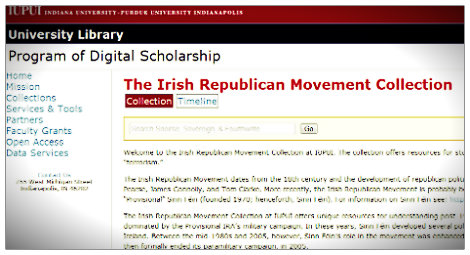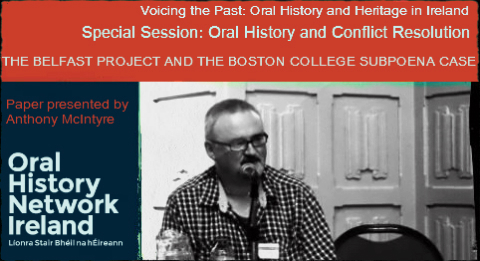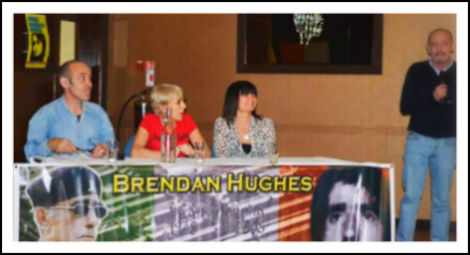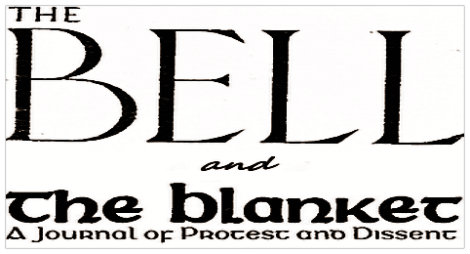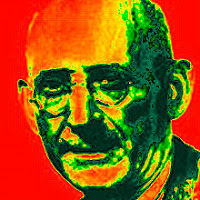Guest writer Sean Matthews with a piece on sectarianism and inequalityRecent Loyalist rioting in North Belfast is a reminder that beneath the shiny new ‘normalised’ Northern Ireland is a political process that reaps what it sows. While our local politicians continue to promote and sell the North to greedy developers, investors and tourism the reality is the majority of us, the working class have been left behind by a so-called settlement in which we are left to rot to be discarded and disposed when necessary.
As increasing poverty, sectarianism, lower wages, mass unemployment, lack of affordable and social housing - including the introduction of water charges back on the agenda - being as raw as ever the need to build a political alternative to the politics of green and orange is as urgent and relevant as ever.
For some, the three days of rioting was reminiscent of loyalist rioting across the North in 2005 and a re-wind to the Drumcree standoff in the 1990s, while for other media commentators this was an attempt by sections of the loyal orders and loyalist paramilitaries to give a signal that all is not well in loyalist working class heartlands.
The reality is the recent disturbances is never isolated in the context of Northern Ireland and is firmly located within a political process which has merely cemented and embedded sectarianism and segregation, rather than seeking to overcome and transcend differences and divisions.
Instead of seeking building freedom and social equality for all in terms of class politics and revolutionary transformation(which it never intended to do), we have ‘equality of the two traditions’ and a change in the name and badge of the police. As Jason Walsh Stephen Rainey highlighted in the
Irish Examiner this week earlier this month:
Things have improved since the 1990s — the absence of bombs and relative absence of bullets is not nothing — but the expansion of inequality, including the cultivation of fraudulent "cultural difference" among sections of society is the price of Northern society’s persistence. In fact, to speak of "Northern Irish society" is to speak of nothing. All talk of respect, the "two communities", and "new dispensations" pushes all debate into the background….The institutions are dysfunctional and factional. "Justice", for instance, is a republican-unionist issue, so it is not really about justice, it’s about balance. On this and every other issue the balance must be struck between the "two communities".
Secondly, the volatile issue of parades and Parades Commission rulings remains a significant obstacle to overcome and will in the foreseeable future ignite and fuel existing antagonism and disillusionment with the status-quo. Unfortunately, in the short-term this dissatisfaction and resentment will express itself in a sectarian dimension as we witnessed this week. This was apparent listening to Radio Ulster Steven Nolan show this week when North and West Belfast Parades Forum spokesman and loyalist Winston Irvine constantly blamed the rioting on ‘erosion of protestant culture and identity’ while republicans and nationalists are getting everything. This is despite the fact that repeated statistics and figures highlight that Catholics remain more than twice as likely to be unemployed than their Protestant counterparts and in consecutive tables ‘nationalist’ communities
top the most deprived and disadvantaged wards in the UK.
This is not to minimise or trivialise social/economic deprivation and grievances especially in terms lack of access to third level education in protestant working class communities but to frame this in terms of us v them in terms of religion is not only dangerous, but is misplaced and suits those in power. Indeed the product of a settlement built on two sectarian ethno blocs competing for resources and power from the crumbs of Westminster.
In contrast, as anarchists, we believe that the fight against sectarianism is also struggle against capitalism and can only be uprooted by building a united working class movement based on self-management, direct democracy and direct action which will wipe away all forms of inequality and discrimination by building a society for all not just the greedy few.
The reality is we are quite far away from this situation especially in a deeply divided society but small steps and bricks must be built if we are to have any chance of breaking the confines. Continuing speculation on who organised the recent rioting, to blaming the Parades Commission and a small republican parade which abided to Parade commission guidelines and was relatively confined to the 'nationalist' New Lodge is a smokescreen which misses the wider picture.
Parading is a physical manifestation past and present of this lethal mix of rivalry, tension and sectarianism which will only benefit the various shades of unionism, paramilitary godfathers and elements of disaffected republicanism. Attempts by right wing opportunist unionist politicians, and loyalism to deflect attention away from existing tension and division within their own ranks in a sectarian tit for tat needs to be actively opposed.
While loyalism and unionism is sectarian and supremacist ideology it is far from monolithic and will unite in times of perceived threat and danger, which is why we need to expose these existing fractures and tensions providing a space for any progressive element that might emerge. The relative absence and weakness of a strong progressive left and trade unions on the ground will mean the forthcoming celebration of the 1932 Outdoor relief riots( in which the falls and Shankill briefly united) will continue to be a romanticised event for the converted few. However, it is important that we continue to build and promote what unites us more than divides us at the coalface of conflict and struggle in our communities and workplaces as part of a non-sectarian revolutionary alternative.
Despite a token 'apology' as a PR stunt by the Royal Black Institution over their recent behaviour outside the Catholic Church in North Street, it remains unclear whether our local ruling class and their forces of repression will be able to keep a lid on a serious eruption of violence at the end of the month in commemoration of signing of the Ulster Covenant in 1912, but what is clear as that as long as we have a process that failures to address the root cause of conflict in our society, lasting peace and justice will forever in the short-term remain a suburban middle-class dream.













